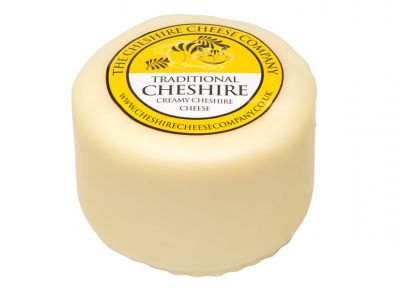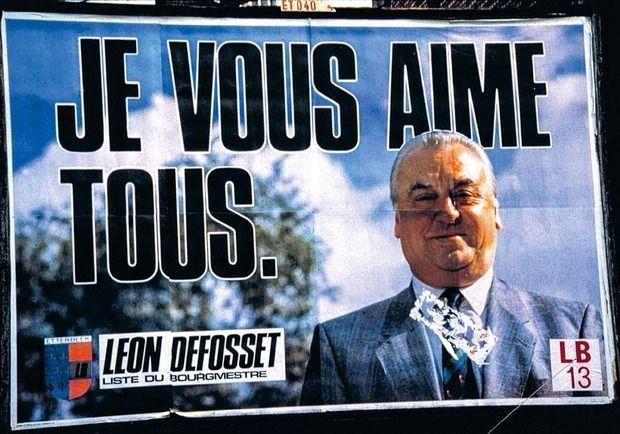Post by Robert Waller on May 5, 2020 20:36:41 GMT
This constituency, which covers a segment of south-east Cheshire including the small towns of the eponymous Congleton, Sandbach, Middlewich and Alsager, has been in Conservative hands since its creation in the boundary review that came into force in 1983. No other party has really come close to taking Congleton, yet somehow it has never seemed to be monolithically Tory, especially when local election results are taken into account. Originally, the seat was coterminous with the Borough of Congleton, which the Liberal Democrats controlled from 1991-92 and again from 1994-2002. In 2009 Cheshire was divided into unitary authorities, and the Tories have still not dominated the divisions therein that are in this seat. In May 2019, for example, Labour won three of the four in Sandbach as well as Middlewich, while the Liberal Democrats returned all three councillors in Alsager plus one in Congleton East. The Conservatives only had a clear lead in the three predominantly rural sections, Brereton, Dane Valley, and Odd Rode.
A survey of the general election results since 1983 does reveal the main reason for the apparent contradiction with the lack of consistent Conservative success in local elections here. It is the divided opposition between Liberal Democrat and Labour, both of which have reliable pockets of strength in Congleton constituency. From 1983 to 2010 the Conservatives never achieved a 50% share of the vote, reaching a low of 41% in 1997 – when the Lib Dem got 29.7% and Labour 27.6%. Then in 2005 the Tory share was 45%, Labour 28%, LD 27%. Sometimes Labour have finished clearly in second place, sometimes the Liberal Democrats, but there never has seemed to be a clear opportunity for tactical voting.
The levels of support for the three main parties are explicable. Labour has traditionally done best in Middlewich; as the suffix –wich implies, this was once a centre for salt mining, and to an extent shares the left wing preferences of mineral extraction workers. Alsager near the Staffordshire border, where the Liberal Democrats are strongest, was the site of a university campus, one of those belonging to Manchester Metropolitan, though moved to Crewe from 2006. The mixed Sandbach has industrial origins, silk mills and the original home of Foden’s lorries (only the Foden’s Brass Band remains). Congleton itself (population 26,000) is an old market town and also once made silk like its neighbour to the north, Macclesfield, though now its reduced manufacturing sector includes airbags and golf balls. The smaller communities like Holmes Chapel are more fertile for the Conservatives. Most of the seat spreads across the Cheshire Plain below the foothills of the Peak District, the most notable feature of the view being the dishes of the Jodrell Bank observatory near Goostrey, which is just within this seat.
In the most recent elections, 2015 through 2019, the Conservatives have achieved successively their strongest performances in the constituency, 53.3%, 56.6% and in December 2019 their best ever, 59.0%. The referendum result in 2016 is estimated to be close to the national 52-48 Leave margin, but the Liberal Democrats were done in by their participation in the coalition (dropping from 32% to 9% 2010-15) and the seat’s demographics have not favoured Corbyn’s brand of Labour party: it is not particularly wealthy, but it is high up the list for white residents, UK born, and its age structure is significantly older than average. From 1983 for 27 years Congleton was represented by Anne Winterton, wife of the Macclesfield MP. Since then Fiona Bruce (not the TV newsreader) has taken over and the Conservative position has further strengthened. Unless Jodrell Bank identifies a threat from outer space, it looks as if she will remain the member here as long as she wishes.
2011 Census
Age 65+ 20.3% 122/650
Owner-occupied 78.3% 32/650
Private rented 9.8% 584/650
Social rented 10.4% 571/650
White 98.2% 94/650
Black 0.1% 602/650
Asian 0.8% 558/650
Managerial & professional 37.7%
Routine & Semi-routine 22.7%
Degree level 31.0% 159/650
No qualifications 20.1% 453/650
Students 6.2% 447/650
2021 Census
Owner occupied 77.5% 26/573
Private rented 11.7% 557/573
Social rented 10.8% 485/573
White 96.9%
Black 0.3%
Asian 1.2%
Managerial & professional 40.4% 102/573
Routine & Semi-routine 20.4% 407/573
Degree level 36.4% 162/573
No qualifications 14.4% 454/573
General election 2019: Congleton
Party Candidate Votes % ±
Conservative Fiona Bruce 33,747 59.0 +2.4
Labour Jo Dale 15,186 26.5 –7.6
Liberal Democrats Paul Duffy 6,026 10.5 +5.4
Green Richard McCarthy 1,616 2.8 +1.0
Animal Welfare Jane Smith 658 1.1 +1.1
C Majority 18,591 32.5 +10.1
Turnout 57,233 70.7 –2.6
Conservative hold
Swing +5.0 Lab to C
A survey of the general election results since 1983 does reveal the main reason for the apparent contradiction with the lack of consistent Conservative success in local elections here. It is the divided opposition between Liberal Democrat and Labour, both of which have reliable pockets of strength in Congleton constituency. From 1983 to 2010 the Conservatives never achieved a 50% share of the vote, reaching a low of 41% in 1997 – when the Lib Dem got 29.7% and Labour 27.6%. Then in 2005 the Tory share was 45%, Labour 28%, LD 27%. Sometimes Labour have finished clearly in second place, sometimes the Liberal Democrats, but there never has seemed to be a clear opportunity for tactical voting.
The levels of support for the three main parties are explicable. Labour has traditionally done best in Middlewich; as the suffix –wich implies, this was once a centre for salt mining, and to an extent shares the left wing preferences of mineral extraction workers. Alsager near the Staffordshire border, where the Liberal Democrats are strongest, was the site of a university campus, one of those belonging to Manchester Metropolitan, though moved to Crewe from 2006. The mixed Sandbach has industrial origins, silk mills and the original home of Foden’s lorries (only the Foden’s Brass Band remains). Congleton itself (population 26,000) is an old market town and also once made silk like its neighbour to the north, Macclesfield, though now its reduced manufacturing sector includes airbags and golf balls. The smaller communities like Holmes Chapel are more fertile for the Conservatives. Most of the seat spreads across the Cheshire Plain below the foothills of the Peak District, the most notable feature of the view being the dishes of the Jodrell Bank observatory near Goostrey, which is just within this seat.
In the most recent elections, 2015 through 2019, the Conservatives have achieved successively their strongest performances in the constituency, 53.3%, 56.6% and in December 2019 their best ever, 59.0%. The referendum result in 2016 is estimated to be close to the national 52-48 Leave margin, but the Liberal Democrats were done in by their participation in the coalition (dropping from 32% to 9% 2010-15) and the seat’s demographics have not favoured Corbyn’s brand of Labour party: it is not particularly wealthy, but it is high up the list for white residents, UK born, and its age structure is significantly older than average. From 1983 for 27 years Congleton was represented by Anne Winterton, wife of the Macclesfield MP. Since then Fiona Bruce (not the TV newsreader) has taken over and the Conservative position has further strengthened. Unless Jodrell Bank identifies a threat from outer space, it looks as if she will remain the member here as long as she wishes.
2011 Census
Age 65+ 20.3% 122/650
Owner-occupied 78.3% 32/650
Private rented 9.8% 584/650
Social rented 10.4% 571/650
White 98.2% 94/650
Black 0.1% 602/650
Asian 0.8% 558/650
Managerial & professional 37.7%
Routine & Semi-routine 22.7%
Degree level 31.0% 159/650
No qualifications 20.1% 453/650
Students 6.2% 447/650
2021 Census
Owner occupied 77.5% 26/573
Private rented 11.7% 557/573
Social rented 10.8% 485/573
White 96.9%
Black 0.3%
Asian 1.2%
Managerial & professional 40.4% 102/573
Routine & Semi-routine 20.4% 407/573
Degree level 36.4% 162/573
No qualifications 14.4% 454/573
General election 2019: Congleton
Party Candidate Votes % ±
Conservative Fiona Bruce 33,747 59.0 +2.4
Labour Jo Dale 15,186 26.5 –7.6
Liberal Democrats Paul Duffy 6,026 10.5 +5.4
Green Richard McCarthy 1,616 2.8 +1.0
Animal Welfare Jane Smith 658 1.1 +1.1
C Majority 18,591 32.5 +10.1
Turnout 57,233 70.7 –2.6
Conservative hold
Swing +5.0 Lab to C



